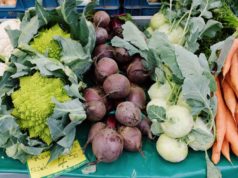The keto diet has recently become very popular. It does have many benefits, including aiding in weight loss and helping decrease blood pressure.
However, it’s still important to know the basics of the diet first to ensure that you can stay happy and healthy.
What is keto?
Keto (short for ketogenic) is a diet that eliminates almost all carbs and added sugars. It focuses on foods high in protein and fat, as well as plenty of different vegetables.
Basically, you are eating whole foods that nourish your body instead of foods that offer quick bursts of energy. Grains, starches, and many fruits are not allowed, but there are still plenty of delicious foods available.
What are the benefits?
Diets low in carbs and sugars have been shown to be as effective as some drugs at lowering blood pressure.
If you have chronically high blood pressure or have recently experienced a spike in it due to a medical condition or stress, consulting with a doctor about switching to keto may have huge positive impacts.
The keto diet has also helped people lose weight quickly within the first few weeks because they stop consuming many snacks and desserts, which are normally very high in carbs and added sugars.
Eating denser foods that are packed with protein can also help stabilize blood sugar and energy levels throughout the day.
Many people doing the ketogenic diet report feeling awake and alert, even in the afternoon, when many people experience the “post-lunch crash.”
What foods can you eat?
The first thing to eliminate is all added sugars. Go through your home and read the ingredients of everything in the cupboards.
Down under the sugars section, most foods have an “added sugars” label. If there is any added sugar, it’s time to toss it. After cutting out the added sugar in things like cakes, cookies, donuts, candy, and bread, pay attention to fruit.
Although the sugar in fruit is natural, bananas, pineapple, oranges, and many other fruits have almost no protein. Potatoes and other starchy foods are similar in that they are full of carbs and little else.
Once you know what you can’t eat, it’s important to know what you can. Meats, nuts, leafy greens, some berries, vegetables (although some are “off-limits”), and fish are all up for grabs.
Many companies have started making keto snacks too, so you can always find something tasty that still fits in with your diet.
Fat burning methods with keto
Since the ketogenic diet focuses on protein and fat, now is a great time to work out and build muscle. Eat a light snack, such as almonds, two or three hours before a workout.
Then afterward, eat a meal rich in fats and proteins. You’ll still have plenty of energy, but the protein actually gives your muscles something to build off of after you work out.
You’ll quickly start to see a decrease in fat and an increase in muscle tone by following a workout schedule.
Healthy eating practices
As with any diet, it is important to always know what you’re doing. Before you switch to keto, do your research and talk to a doctor to make sure that it is a safe option for you.
As long as it won’t cause any health risks, the diet should be totally safe. Once you switch over, try to ease your way in. Immediately eliminating most sugar from your diet can cause your body to react, and can give you headaches, nausea, and mood swings.
Slowly start to lessen the amount of carbs and added sugar you consume over a couple of weeks before fully converting to keto. Once you are doing the keto diet, make sure you are still getting the proper nutrients.
Fiber is an important one. Since you won’t be eating as much fruit, you’ll need to find other foods that give you enough fiber to keep your digestive system healthy.
Although going keto is a trend right now, it’s all for good reason. If you’ve been feeling sluggish or unconfident in your body lately, it could be because of what you have been eating.
By eliminating sugars and eating whole, nourishing foods, you’ll do your body good so that you can stay happy and healthy for years to come.











